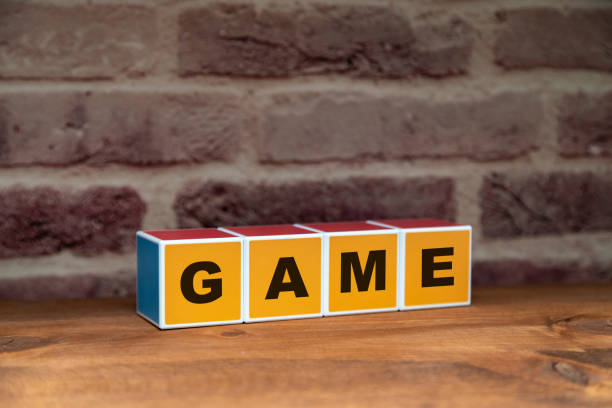Boxing gloves are an essential piece of equipment in the sport of boxing, serving not just as a protective barrier but also as a tool that has significantly shaped the sport’s development. From their rudimentary beginnings to their modern-day designs, boxing gloves have evolved to provide safety, enhance performance, and maintain the sport’s integrity. This article explores the history, evolution, design, and importance of boxing gloves in boxing and other combat sports.
The Origins of Boxing Gloves
The origins of boxing gloves can be traced back to ancient civilizations, where combat sports were a popular form of entertainment and a demonstration of physical prowess. The earliest forms of boxing gloves, known as cestus, were used by the ancient Greeks. These gloves were essentially leather strips wrapped around the fists, often reinforced with metal or spikes to inflict maximum damage on the opponent. The primary purpose of the cestus was not to protect the hands but to enhance the effectiveness of punches, making the sport brutal and often deadly.
The Romans later adopted this practice, and their version of boxing gloves was even more brutal. They often added iron plates or studs to the gloves, turning boxing into a gladiatorial sport where fighters frequently fought to the death. The brutality of these early forms of boxing led to the sport being banned in many regions for centuries.
The Modern Era of Boxing Gloves
The sport of boxing as we know it began to take shape in the 18th century, with the introduction of the London Prize Ring Rules in 1743. These rules laid the foundation for the modern sport, but it wasn’t until the late 19th century that boxing gloves as we know them today began to emerge. The Marquess of Queensberry Rules, introduced in 1867, mandated the use of gloves in all matches, marking a significant shift in the sport’s approach to safety and sportsmanship.
These early gloves were made from leather and were filled with horsehair padding. They were designed to protect the hands of the fighter rather than their opponent, but they did help reduce the number of injuries and fatalities in the sport. Over time, the design of boxing gloves continued to evolve, with improvements in materials and padding techniques aimed at increasing safety and comfort.
The Evolution of Boxing Glove Design
The design of boxing gloves has come a long way since their inception. Early gloves were fairly simple, made from leather with a lace-up design to ensure a snug fit. They were often filled with horsehair, which provided a basic level of padding but was not particularly effective at absorbing shock. This often resulted in injuries, not just to the opponents but also to the wearer’s hands and wrists.
The 20th century saw significant advancements in the design and materials used for boxing gloves. Synthetic materials like polyurethane and latex foam began to replace horsehair, offering better shock absorption and durability. The lace-up design gradually gave way to Velcro straps, which provided a more secure fit and made the gloves easier to put on and take off.
Today, boxing gloves are highly specialized pieces of equipment, with various types designed for different purposes, such as sparring, training, and competition. Modern gloves are designed to provide maximum protection to both the wearer and their opponent, with multi-layered foam padding, ergonomic shapes to support proper fist alignment, and breathable materials to improve comfort and reduce moisture buildup.
Types of Boxing Gloves
Understanding the different types of boxing gloves is essential for anyone involved in the sport, from amateurs to professionals. The main types of boxing gloves include:
- Training Gloves: These are the most versatile gloves, used for general training, including bag work and pad work. They offer a good balance of padding, durability, and comfort. Training gloves are designed to protect the hands and wrists during intense workouts.
- Sparring Gloves: These gloves are specifically designed for sparring sessions, where the emphasis is on practicing techniques rather than delivering knockout punches. Sparring gloves are usually heavier and have extra padding to minimize the risk of injury to both the wearer and their sparring partner.
- Bag Gloves: Bag gloves are designed specifically for punching bags. They tend to be lighter and have denser padding to protect the hands from the impact of repeated punches against heavy bags. These gloves are not suitable for sparring or competition due to their minimal padding.
- Competition Gloves: Competition gloves are designed for professional and amateur fights. They are typically lighter and have less padding compared to training or sparring gloves, emphasizing speed and power. The gloves’ weight is often regulated depending on the weight class of the fighters and the governing body’s rules.
- Muay Thai Gloves: Although similar to traditional boxing gloves, Muay Thai gloves are designed to accommodate the sport’s clinching and grappling techniques. These gloves are often more flexible around the wrist area, allowing for a better range of motion.
The Science Behind Boxing Gloves
Boxing gloves are meticulously designed to optimize safety and performance. The primary function of a boxing glove is to distribute the impact force of a punch over a larger area, reducing the chance of cuts and concussions. The padding material plays a crucial role in absorbing and dispersing the force, protecting the knuckles and the opponent’s face and head.
The shape and structure of the glove also influence its effectiveness. A well-designed glove supports the natural curvature of the hand, helping prevent injuries such as sprains and fractures. Additionally, gloves must provide ample wrist support to prevent hyperextension during powerful punches. Modern gloves often feature a thumb-lock design to prevent accidental eye gouging or thumb injuries.
The Role of Boxing Gloves in Safety and Fair Play
While boxing remains a physically demanding and potentially dangerous sport, the evolution of gloves has significantly improved safety standards. Gloves have reduced the number of serious injuries, such as broken jaws, concussions, and hand fractures, making the sport more accessible to a broader audience.
Moreover, the use of gloves has contributed to fair play in boxing. By standardizing glove weight and design across different competitions and weight classes, governing bodies ensure that all fighters compete on a level playing field. This has been critical in maintaining the sport’s integrity and ensuring that matches are determined by skill, strategy, and endurance rather than brute force alone.
The Impact of Boxing Gloves Boxing gloves are an essential piece of equipment in the sport of boxing, serving not just as a protective barrier but also as a tool that has significantly shaped theBeyond the

Ring
Boxing gloves have become iconic symbols in popular culture, representing strength, perseverance, and the fighting spirit. They are often used metaphorically to denote toughness and resilience, transcending the sport itself. The image of a pair of red boxing gloves has become a universal symbol of the sport and a recognizable icon in advertising, film, and fashion.
Beyond boxing, the design principles and protective features of boxing gloves have influenced other combat sports, such as mixed martial arts (MMA), kickboxing, and Muay Thai. Each of these sports has adapted the glove design to suit its unique demands, further emphasizing the importance of hand protection and safety.
Conclusion
Boxing gloves have come a long way from their brutal origins in ancient Greece and Rome. Today, they are highly specialized tools that play a crucial role in ensuring the safety, fairness, and enjoyment of the sport. The evolution of boxing gloves reflects broader changes in the sport itself, from a focus on brute strength and endurance to a more strategic and skill-based approach. As the sport continues to evolve, so too will the design and functionality of boxing gloves, ensuring that they remain an integral part of boxing and combat sports for years to come.
Whether you’re a professional fighter, a fitness enthusiast, or someone new to the sport, understanding the significance of boxing gloves and choosing the right pair for your needs is crucial. With their rich history and ongoing evolution, boxing gloves are more than just pieces of equipment—they are symbols of the sport’s enduring spirit and commitment to safety and fair play.





